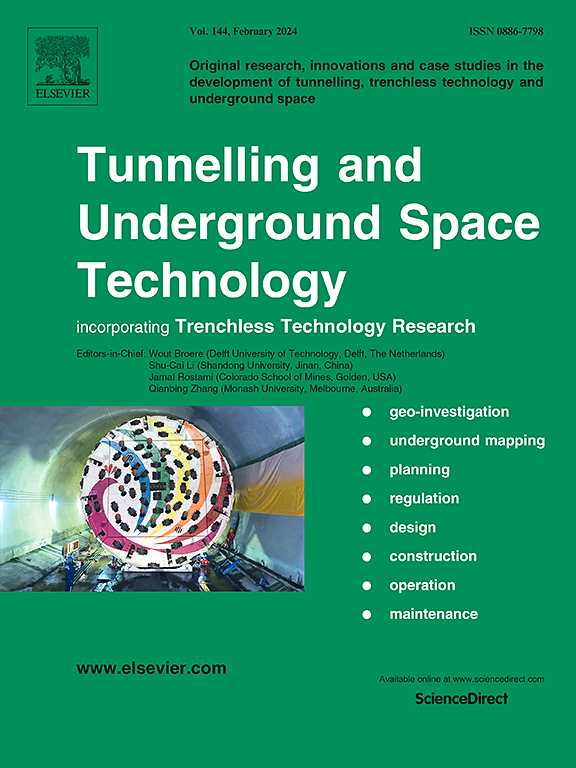Experimental study on multiple fire hazards both inside and outside a naturally ventilated tunnel: Burning rate and flame characteristics of unequal fires
IF 6.7
1区 工程技术
Q1 CONSTRUCTION & BUILDING TECHNOLOGY
引用次数: 0
Abstract
This study investigated the burning rate and flame characteristics of unequal fires separated inside and outside a naturally ventilated tunnel. Outside fire size and fire separating distance were varied. In this scenario, the asymmetric fire behaviors were formed by asymmetric airflow distribution induced by the unequal inside and outside fires. The variations of their fire behaviors were grouped into Regions Ⅰ and Ⅱ with the boundary of S/din = 1 (S is fire separating distance and din is inside fire size), but the inside and outside ones differ from each other. The outside flames were always tilted upstream with similar angles and heights, while the tilt direction of the inside flames changed with the increasing outside fire size in Region Ⅰ and the flame heights were lowered when S/din > 3 (in Region Ⅱ-b). Moreover, the burning rate of the outside fire was lowered in Region Ⅰ, while that of the inside fire was lowered in Region Ⅱ-b. The discrepancy was due to the different influence ranges of fire interaction and heat feedback enhancement. The results and interaction mechanism were compared with those of equal inside and outside fires for analysis. The evolution of the flame tilt angles was theoretically analyzed and the correlations of the dimensionless flame heights and heat release rates were established.
求助全文
约1分钟内获得全文
求助全文
来源期刊

Tunnelling and Underground Space Technology
工程技术-工程:土木
CiteScore
11.90
自引率
18.80%
发文量
454
审稿时长
10.8 months
期刊介绍:
Tunnelling and Underground Space Technology is an international journal which publishes authoritative articles encompassing the development of innovative uses of underground space and the results of high quality research into improved, more cost-effective techniques for the planning, geo-investigation, design, construction, operation and maintenance of underground and earth-sheltered structures. The journal provides an effective vehicle for the improved worldwide exchange of information on developments in underground technology - and the experience gained from its use - and is strongly committed to publishing papers on the interdisciplinary aspects of creating, planning, and regulating underground space.
 求助内容:
求助内容: 应助结果提醒方式:
应助结果提醒方式:


